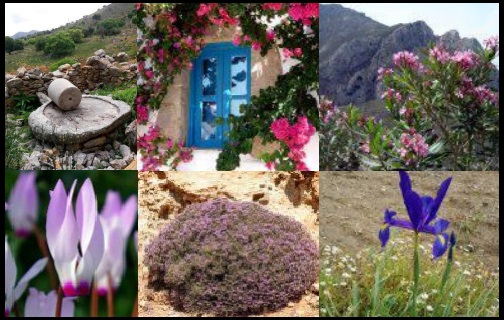Tilos
Tilos is an island of the Dodecanese, which you can visit from the Port of Skala Kameiros, Rhodes, on a day trip with or without your vehicle, with our vessel Panagia Evaggelistria.
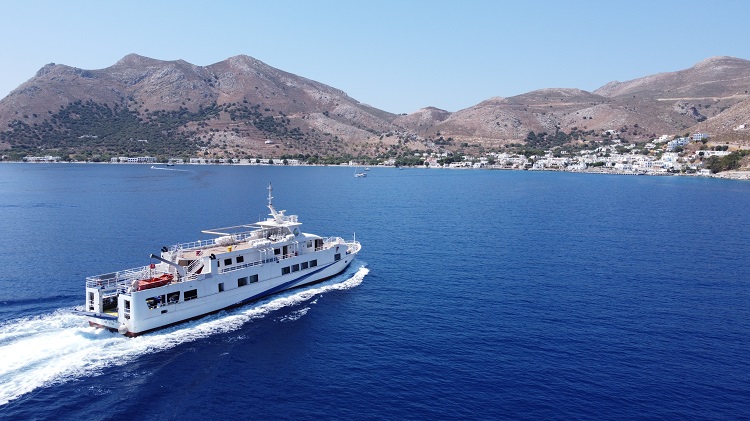
Tilos has nineteen beaches, twelve mountains with gushing natural springs, seven medieval castles, a Byzantine monastery, two hundred churches, a cave full of natural discoveries, a village that is a declared cultural monument, over a hundred bird species, hundreds of flora species and five hundred residents. Maintaining the physiognomy of the past, Tilos gives us the opportunity to rediscover Greece of times past.
Sightseeings / Beaches
The port of Livadia located on the east side of Tilos which is the main entry point for most visitors. The village of Livadia quietly hugs the shore next to the port. As you face eastward, the silhouette of the mountains of Turkey appear to rise out of the distant background, while early morning fishermen can be seen guiding their boats out of the harbor in order to catch the food of the day. As your gaze drifts upward to the sky, Agriosykia Castle emerges from the rocky mountaintop, as it has done unfailingly for the past six hundred years.
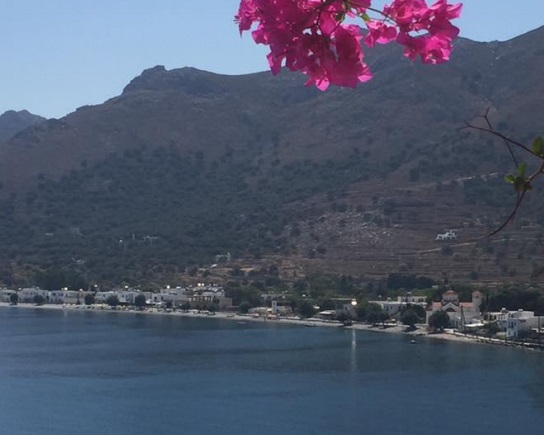
As the sun slowly rises, we are captivated by the changing pastel hues of the mountains above Livadia which stand in contrast to the unremarkable architecture prevailing in the village below. There are a few noticeable exceptions which include the gracefully sculpted Italian architecture of the Tilos Police Station building at the port, reminiscent of the Italian domination of the island from 1912 until 1948. Dotting the foothills of the mountainside we see scattered white, cubed buildings in which small, fully equipped apartments have been constructed and tastefully landscaped with spectacular views overlooking the bay.
Livadia Beach is 20 metres away from the port. It begins with pebbles and gradually becomes sand at its distant end. Whoever loves the sea will enjoy swimming and snorkeling in warm, crystal clear water, windsurfing, canoeing and sunbathing on comfortable lounge chairs that peak out from the welcome shade of tall pine trees scattered along the beach. A multitude of small tavernas that overlook the beach or are tucked away in the village, fulfill our needs for food. Traditional Greek food and beverages satisfy every desire or habit.
Leaving Livadia, Tilos has a sweet and calm feeling that is derived from its honest and eager residents, its relaxing atmosphere and the feeling that the village reflects the history of past ages.
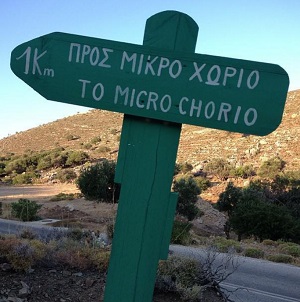
Mikro Chorio, built in the 15th century on the hills above Livadia and abandoned after the Second World War by its inhabitants. Some of them headed to Livadia to set up businesses around the port. Thus, they built a welcoming village with small shops and cafes that serve the needs of residents and visitors throughout the year.
On our way to Megalo Chorio we cross the mountain and admire the ancient stone walls built centuries ago to guard the animals, the numerous tiny churches with irregular rural architecture that are barely discernible among the rocks and the twisted trunks of the windswept oaks and olives which have been standing there for years, guarding the secrets of the island's past.
Nature walkers will discover the two hundred scattered Byzantine churches, forty-one of which retain their original frescoes. The presence of the past in the atmosphere surrounding these churches is particularly noticeable and enchants us. Crossing the groomed mountain paths, we encounter abundant species of flora and fauna and our nostrils are tickled by the spicy aroma of wild thyme and various herbs. The Greek myth about the origin of the name of Tilos immediately comes to mind.
On the west, towards the ancient capital of Tilos, a castle is outlined on top of the mountain which is a remnant of the castle and fortress of Messaria built between the 14th and 15th centuries. Below it, is the Harkadio cave, the recent excavations of which surprised paleontologists, since inside it were found the skeletons of dwarf elephants dating back to 4,500 BC. An impressive presentation of the excavations can be found in Megalo Chorio.
Just three kilometers from the road, the village of Megalo Chorio begins to appear on the hill of Agios Stefanos. A calm and innate charm characterizes this particular village that is so close to tradition. In 1827, the construction of its buildings began and the incorporation into them of ancient remnants of buildings. Examples of the traditional architecture of its buildings are the Town Hall, the primary school and the library, the Dwarf Elephant Exhibition, the doctor's office and the grocery store. The neighboring square generously offers us the scents and colors of its garden with its bougainvillea, hibiscus and roses. That point is the most ideal to see from above the valley and the Gulf of Aristos to the south.
After our visit to Megalo Chorio we are possessed once again by the sense of respect that the island has for its ancestors. This is particularly evident through residents' discussions of family chapels, their efforts to protect the environment, the ban on hunting, the importance they place on organic farming and their cemeteries. There is one conclusion: the road between Livadi and Megalo Chorio may connect the two cities by road, but it cannot completely bridge these two different worlds.

The fertile valley and the blue color of the bay of Eristos tempt us to explore the village of Eristos. An area with an abundance of springs, crops of a wide variety of fruits, almond trees and vegetables and with a magnificent colorful mosaic of wildflowers in the spring season. The valley of Eristos is succeeded by the most beautiful beach of the island, the beach of Eristos.
Few kilometers north of Megalo Chorio, in the bay of Plaka, located another beautiful and protected beach of Tilos. Before we reach Plaka, we find in the northern part of the island the picturesque bay of Agios Antonios, with its small port, some rooms for rent and a restaurant. The area is also dominated by the ancient cemetery of Agios Antonios with its petrified human skeletons, which is particularly important for its historical value. The skeletons are only visible from the sea.
From Plaka to the west, we head to the monastery of Agios Panteleimons which was built in 1470, renovated in 1703 and 1824 and extended in 1843. The porticoed entrance leads to a pebbled courtyard, which is surrounded by plane trees, flowers, basil and vines. The monastery is walled and from the courtyard we are led to the church with its old mosaics that have been restored after the placement of lime mortar by the Turks. The houses of the monks are next to the church. Following a small path, we will discover a tree-covered area for rest and relaxation and quench our thirst in its cool spring.
The monastery experienced great prosperity during the 18th and 19th centuries, as it was a key economic as well as spiritual center of the time. He owned large tracts of land with herds of animals, while the banknotes used on the island were also printed there.

Tilos Culture
The rich cultural tradition of Tilos is directly connected to its history. Samples of Tilos civilization are its ancient and Byzantine monuments, the castles, the caves, the churches, the monasteries and the rare icons and hagiographies. Specifically, during the Byzantine era, strong artistic creativity was developed in ecclesiastical activity. The excavations of the skeletons of pygmy elephants dating back to 4,500 BC in Charkadio cave are considered a very important fact.
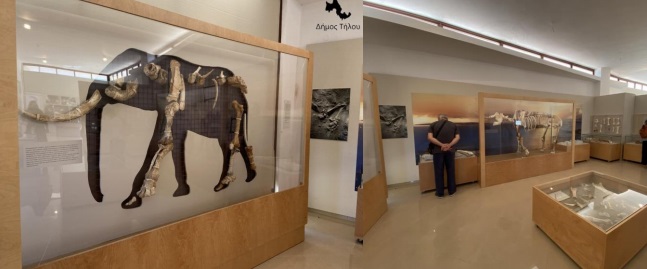
The island flourished during the Classical era, during which it had its own mint and it was known for its fine-spun clothes and its perfumes.
Tilos was the birthplace of the ancient poet Irinna, contemporary of Sapfo, who became inspired by the natural beauty of the island, its aromas, its vegetation and its calmness. Through her poetry in praise of Tilos, she passed on to us the most noble of human values.
Finally, the oppressors Lelon and Leron, the establishers of Big Greece, came from Tilos.
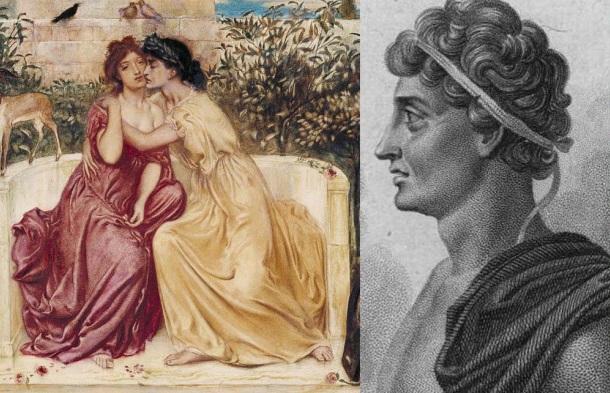
Myth and Herbs
In spring, autumn and winter, Tilos resembles an artist's canvas with the bright colors of wild flowers and herbs scattered on the mountains and beaches. In the summer, bright colors give way to the green and golden shades of nature. The wild chamomile and the strong smell of thyme and sage of the fields, bring to mind the Greek myth that explains the name of the island. According to legend, Tilos who was the youngest son of Alia and Apollo, god of the sun, collected herbs from the island hoping to cure his mother of a serious illness. After her healing, Tilos returned to the island and built a temple in honor of Apollo and Poseidon in order to express his appreciation for his mother's healing. The island took its name from Tilos and since then it became known for the healing properties of its herbs.
